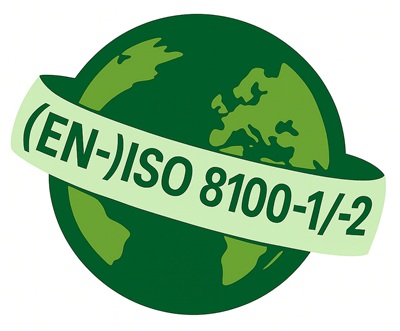As the elevator industry continues to evolve, so do the safety and performance requirements for lift systems. At Liftinstituut, we closely follow these developments to keep our clients and stakeholders informed. One of the most significant current developments in lift standards is the ongoing work on ISO/DIS 8100-1/-2 – the final international standards ISO 8100-1/-2 will also be published as European Standards EN-ISO 8100-1/-2 (identical) to replace EN 81-20/-50.
 We are now in the final phase of the development, with final consolidation work being carried out by CEN TC10 Working Group 1 (WG1). The formal voting period is scheduled to run from November 1 to December 31, 2025. During this time, only editorial comments can be addressed. These may come not only from national standardization organizations but also from liaisons, technical committee observers, and other contributors with formal agreements.
We are now in the final phase of the development, with final consolidation work being carried out by CEN TC10 Working Group 1 (WG1). The formal voting period is scheduled to run from November 1 to December 31, 2025. During this time, only editorial comments can be addressed. These may come not only from national standardization organizations but also from liaisons, technical committee observers, and other contributors with formal agreements.
If the process continues as planned, the final publication of EN-ISO 8100-1/-2 is expected by March 1, 2026.
Why (EN-)ISO 8100-1/-2 Matters
(EN-)ISO 8100-1 and (EN-)ISO 8100-2 are set to become the primary international standards for lift design, construction, and safety. These standards are developed to align with essential health and safety requirements (EHSRs) under the EU Lifts Directive, and the global essential safety requirements (GESRs) of ISO 8100-20, with the aim of achieving harmonization across the EU and globally.
To ensure conformity with the EU Lifts Directive, the referenced standards such as EN 81-28 must be published simultaneously with EN-ISO 8100-1. Other additional standards (e.g. EN 81-21, 70, 71, 72, 73, 77) will need to be updated and published within the three-year superseding period following publication of EN-ISO 8100-1/2 – a considerable task for the industry in the years ahead.
Key Changes in (EN-)ISO 8100-1
The updated document brings important additions and revisions, including:
- Editorial restructuring per ISO/IEC Directives, Part 2
- New requirements for vertically sliding landing and car doors
- Provisions for suspension means other than steel wire ropes
- Requirements for automatic rescue operation
- Updated guidelines for traction lifts with increased car area
- Revision of requirements for SIL-rated circuits (previously PESSRAL)
- Inclusion of working platform requirements in the pit
- Enhanced safety against hand dragging in doors
- Compensation means entering the refuge space in the pit
- Updated brake requirements and monitoring
- Revisions to pit access ladder specifications
- New specifications for fire classification of electric cables
- Requirements addressing cybersecurity risks
- Revised emergency operation requirements
- New rules for bypassing normal travel limits during inspection operation
- Revisions to SIL levels of electric safety devices (Annex A)
- Additions to electric fault list (e.g. short circuit between adjacent conductors of travelling cable)
- Mechanical strength specifications for well lighting system luminaires
- Revised requirements for information for use.
- Load measuring updates for goods passenger lifts
- New requirements for hydraulic brake release
- Building-related requirements moved to annex
- Dimensions for signs and information clarified
- Revised requirements for stopping devices and inspection switches in pit and car
- Provisions for non-metallic traction sheave groove liners
- Electrical means for speed monitoring and tripping safety gear
- Emergency stop switch and emergency electrical operation controls revised
- Updates to Annex ZA
Key Changes in (EN-)ISO 8100-2
This document includes updates and clarifications in test procedures and terminology:
- Editorial revision of structure according to ISO/IEC Directives
- Mechanical and temperature test updates for safety and SIL-rated circuits
- Correction of traction calculation formulae
- Verification methods for non-steel rope suspension and compensation means
- Discard criteria for suspension means and power transmission contact added
- Revised SIL-rated circuit requirements
- Terminology adjustments (e.g. “examinations” to “verifications”, “certificate information” to “instructions information”)
- Removal of documentation submission and technical product requirements
- Improved test procedure alignment
- New verification method for tripping elements of safety gear
- Updates to Annex ZA
Looking Ahead: What This Means for the Industry
If EN-ISO 8100-1/-2 is published as currently planned on March 1, 2026, it is expected to become harmonized in Q3 of 2026. It is expected that there will be a transition period of 36 months, starting from the date of publication. Until then, lift and lift component certifications will continue to be based on EN 81-20/-50. However, once published Liftinstituut can already support clients in preparing for EN-ISO 8100-1/-2. For global use, Liftinstituut can issue certificates according to ISO 8100-1/-2 immediately after publication.
Stay Informed and Prepare Early
As a leading certification body, Liftinstituut is actively involved in the standardization process and remains your reliable partner in preparing for new regulatory and technical requirements.
Would you like to receive updates on ISO 8100 or other standards relevant to your business? Subscribe to our international newsletter or get in touch with our experts for tailored information on what these upcoming changes mean for your organization.
In Summary: EN-ISO 8100-1/-2 at a Glance
- EN-ISO 8100-1/-2 will replace EN 81-20/-50 as the new international standards for lifts.
- Formal voting on the final drafts: November - December 2025 (editorial comments only).
- Expected publication: Beginning of March 2026.
- Harmonization with the EU Lifts Directive anticipated Q3 of 2026.
- Supporting updated standards such as EN 81-28 must be published simultaneously.
- Extensive updates included across safety, structural, operational, and digital aspects of lift design and performance.
- Content has been restructured to align with ISO/IEC Directives, with annexes used to separate the system and building-specific requirements.
- EN-ISO 8100-2 brings improved test procedures and terminology changes.
Last updated: October 30, 2025





